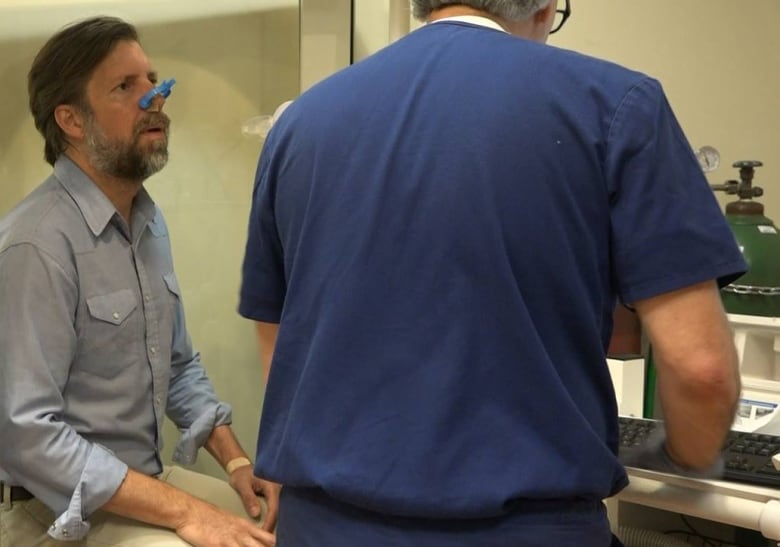‘Breathe through your nose all the time,’ says the science journalist
Breathe in. Breathe out. Now let's review.
If you didn't just inhale and exhale through your nose, it's time to reevaluate how you breathe, according to science journalist James Nestor.
"So many of us are habitually breathing through our mouths instead," he told The Sunday Magazine host Piya Chattopadhyay.
He explained that researchers have known for a long time that breathing through the nose forces air to get heated, pressurized, filtered, and conditioned, allowing the lungs to extract oxygen much more efficiently.
"When you're breathing through the mouth, you're not getting any of those benefits," he said.
Nestor's latest book, Breath: The New Science of a Lost Art, delves into the science and culture of breathing.
"Breathing has actually deteriorated over the past few hundred years," he said.
The San Francisco-based author said the idea for the book was born out of his work with Dr. Jayakar Nayak, chief of rhinology research at Stanford's Otolaryngology Head and Neck Surgery Center.
According to Nestor, Nayak told him that when people breathe through their mouths, it has a huge impact on their skeletal structure.
"Nobody knew how quickly that damage came on because nobody had tested it," Nestor explained.
Anecdotal experiment bolsters 50 years of research
From ancient burial sites to the smoggy streets of São Paulo, Nestor spent four years tracking down people who explore the science behind ancient breathing practices while writing the book.
He also spoke with scientists and reviewed years of medical texts and recent studies to reevaluate long-held beliefs about how humans breathe.
While researching, he participated in a study where he completely plugged his nose with silicone for 10 days, compelling him to breathe only through his mouth.
- Hyperventilating touted as possible treatment for alcohol poisoning
"I still have a little PTSD about it all," Nestor said.
In a photo post from the study, Nestor shared that nasal obstruction triggered instant apnea and snoring and he went from having no snoring issues to snoring through much of night.
He also devised an experiment to compare mouth breathing and nasal breathing over the course of 20 days. Time and budget constraints made it difficult for him and Stanford to enlist 20 people for the study. However, Nestor was able to get Anders Olsson, a Swedish breathing therapist — who paid for his own flight — to participate.
"This was just an experiment. This proves nothing. But what it did do was bolster 50 years of science that has been out there and hundreds and hundreds of studies," Nestor said, referring to the advantages of breathing through your nose.
Advice from the ancestors
According to Nestor, people were talking about breathing for thousands of years.
"If you look at ancient Hindu text, they were talking about breathing," he said. "Further east into China, there are eight books of the Dao dedicated entirely to breathing."





